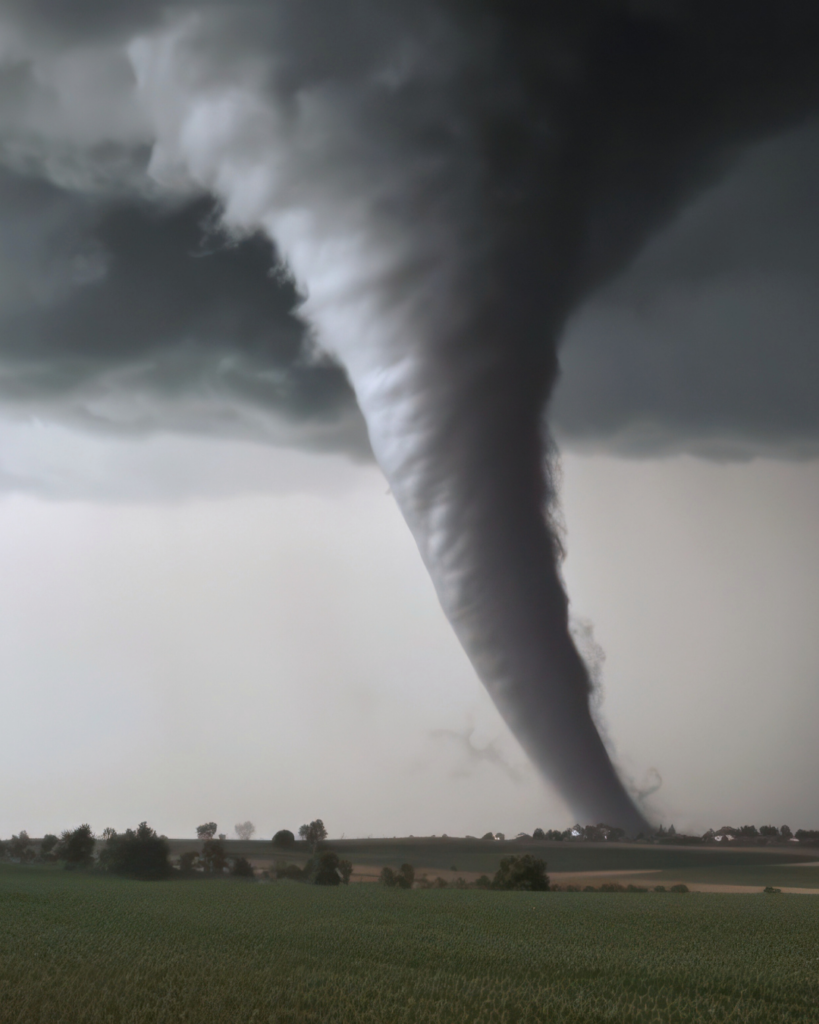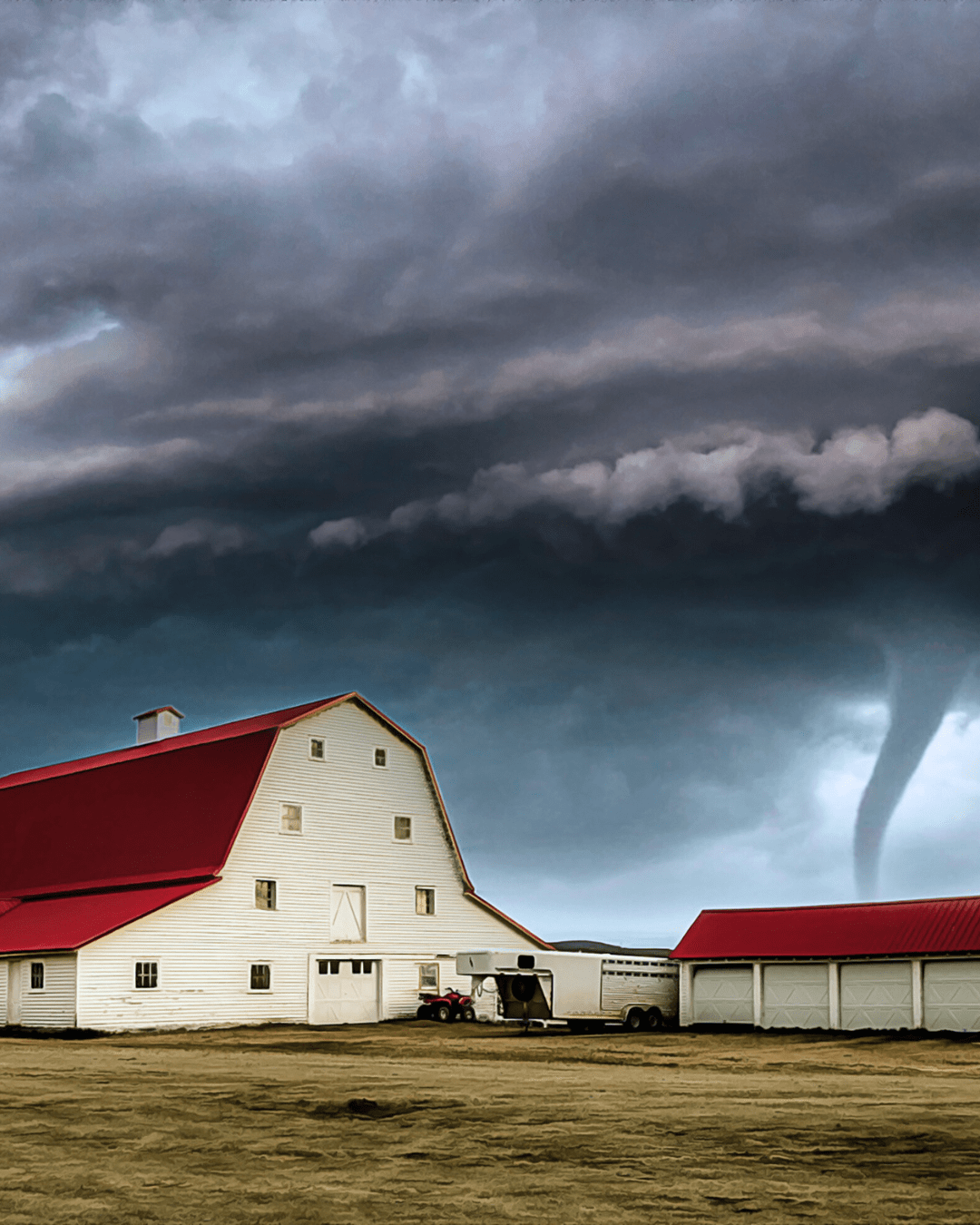
It is the peak of Tornado Season in Georgia, and we all know somebody who isn’t taking that fact as seriously as they should be. Tornadoes and the storms they bring are a real danger to homes and businesses that are not properly prepared. Tornadoes are unpredictable and often surrounded by mystery, but they are most certainly not uncommon. Approximately 1,200 tornadoes occur in the U.S. annually.
Here are some key facts and safety tips to help you stay safe if you ever find yourself in the path of one of these life-changing natural events.
Understanding Tornadoes
Ted Fujita created the Fujita Scale, which we used to use to classify tornadoes using E1-5. Due to the wide variability of storms and recent advancements in research, it has now become the Advanced Fujita Scale, which we classify tornadoes by the following:
- EF0: (65-85 mph winds) Minor impact, causing minimal damage.
- EF1: (86-110 mph winds) Moderate impact, causing minimal damage to roofs and trees.
- EF2: (111-135 mph winds) Severe impact, resulting in considerable property damage.
- EF3: (136-165 mph winds) Major impact, causing extreme damage to the roofs of homes and uprooting trees.
- EF4: (166-200 mph winds) Devastating damage that may completely damage the frames of homes and uproot trees.
- EF5: (winds over 200 mph) Incredible damage, completely sweeping away homes and trees.
History Behind Them
Georgia’s deadliest tornado event occurred during the 1936 Tupelo-Gainesville outbreak that swept through the Southeast, producing at least 14 tornadoes. During this time, the event claimed the lives of at least 454 people and injured over 2,500. Of those, over 200 fatalities occurred in Georgia alone, primarily from the devastating tornado that struck downtown Gainesville, marking it as the deadliest tornado that has ever been recorded in the state.
However, the deadliest recorded tornado in history, which took the lives of nearly 700 people and left over 2,000 people injured, is the Tri-State Tornado. The Tri-State Tornado of March 18, 1925, traveled across Missouri, Illinois, and Indiana, leaving over 15,000 homes destroyed. The wind speeds were at an estimated 300 mph, classifying it as an F5 at the time. The tornado was on the ground for 3 and a half hours and traveled 219 miles. At the time, there was limited forecasting technology. No warnings were issued.

Tornado Warning Signs
Certain terminology is used when storm warnings are issued. If certain weather conditions pose a threat, a tornado watch would be issued. If there is a watch, you should stay alert and pay attention to your local news outlet for any updates. You should be ready to act quickly and have a designated safe area.
During a tornado watch, it is important to be on the lookout for a few key identifying features:
- A dark or green sky may be a sign that a tornado is possible.
- A rotating funnel-shaped cloud could mean that a tornado is forming.
- Dark clouds that are close to the ground may be a sign of an approaching tornado
- Roaring sounds can sometimes be heard as a tornado approaches.
A tornado warning is an emergency alert that is used when an active tornado has been spotted. You should immediately seek shelter.
An emergency alert will be sent out, when a violent tornado is spotted. This is considered the highest alert level by the National Weather Service. You should contact friends and family in the area to ensure that they are aware of the conditions and are taking proper actions for safety.
Creating A Tornado Safety Plan
Creating a tornado safety plan and kit is important, especially if you live in an area where they are more common. Here are some steps to take and items that will come in handy.
- Water is of key importance, especially when it comes to natural disasters. Keep a three-day supply on hand (per person).
- A first-aid kit is an essential part of being prepared if a tornado were to occur. Each first-aid kit should include bandages, antiseptic wipes, gauze, pain relievers, tweezers, thermometer, allergy medication, latex gloves, antibacterial ointment, burn cream, and any prescribed medication that will be needed.
- Non-perishable foods should be stored and ready to go. Canned goods and dried fruits are great options. Keep in consideration any family dietary restrictions and plan accordingly. Be sure to keep a manual can opener handy if you choose to include canned goods.
- Keep a safety kit on hand containing supplies such as flashlights, batteries, tools, portable chargers, duct tape, and whistles.
- Keep personal items stored somewhere safe. This may include personal identification, cash, clothing, and blankets.
What Do I Do If A Tornado is Coming Towards Me?
If you are inside or close to a structure/shelter, the best place to be is in an interior room away from any windows and wide spaces. Preferably, you should locate a safe room or a basement. Sheds, mobile homes, barns, and buildings without a proper foundation and sturdy walls are NOT safe.
- If you cannot find a proper room, try to be at the furthest point from windows, or behind a sturdy object such as a door or heavy shelving, and duck and cover. This can block you from the debris.
If you are in your vehicle during a tornado, the best plan is to drive to the nearest shelter; if not available, DO NOT attempt to outrun the storm.
- If you can not make it to shelter while in your vehicle, DO NOT stay in your car, abandon your car, and find a low-lying area such as a ditch or ravine. Listen for the storm and do not lift your head until it has passed. Note: people usually do not die because a tornado lifts them or their vehicle, but instead because of flying debris, in which a vehicle is a much larger target.
- If you can not leave your vehicle, duck your head and cover.

This is a proper tornado drill position, protecting your head and body.
If you have mobility issues, try and seek shelter under a sturdy table or desk. If you are unable to move from a bed or chair and assistance is not available, protect yourself with pillows and blankets.
Stay away from powerlines and trees if you can. Downed power lines are still active and could electrocute you. Don’t forget your pets if you have time.
FREQUENTLY ASKED QUESTIONS
Do all tornadoes have a visible funnel that contacts the ground?
No. Not all tornadoes have picked up large amounts of debris or have developed significant condensation.
Are rivers, lakes, and mountains considered “safe” from tornadoes?
No. No place is considered safe from a tornado. The infamous Tri-State Tornado of 1925 crossed over the Mississippi and Wabash Rivers.
Can I Seek Shelter Under an Overpass In a Tornado?
Despite popular belief, overpasses do not provide safety from a tornado. They are quite possibly the worst place to seek shelter, as you are at greater risk of being hit or killed by flying objects and being carried out by channeled winds.
Tornado safety should be taken very seriously to avoid any injury. By educating yourself, you are preparing for the unknown, even if you are not in an area that is more susceptible to them. Tornadoes are unpredictable and strong forces that should be taken seriously. Jones & Swanson hope you and your loved ones stay safe during this season.
Jones & Swanson Is A Personal Injury Firm Located In Georgia. If You Or Someone You Know Has Been Hurt As A Result of An Accident, Seek Immediate Medical Assistance, Then Give our Attorneys A Call At (770) 249-5232 or contact Us On Awjlaw.com For A Free Consultation To Find Out The Next Steps You May Want To Take.
Categories: Safety Tips



